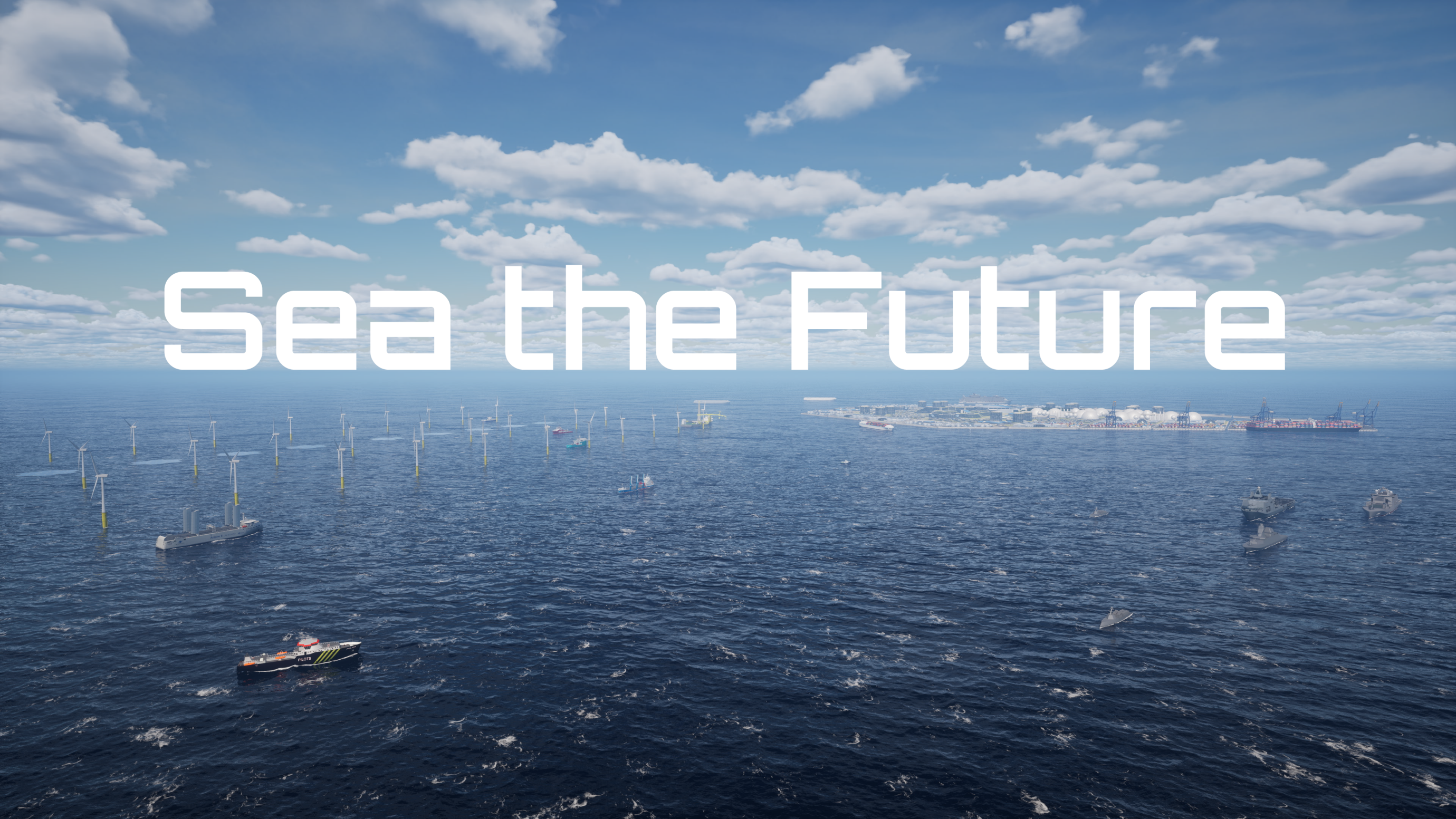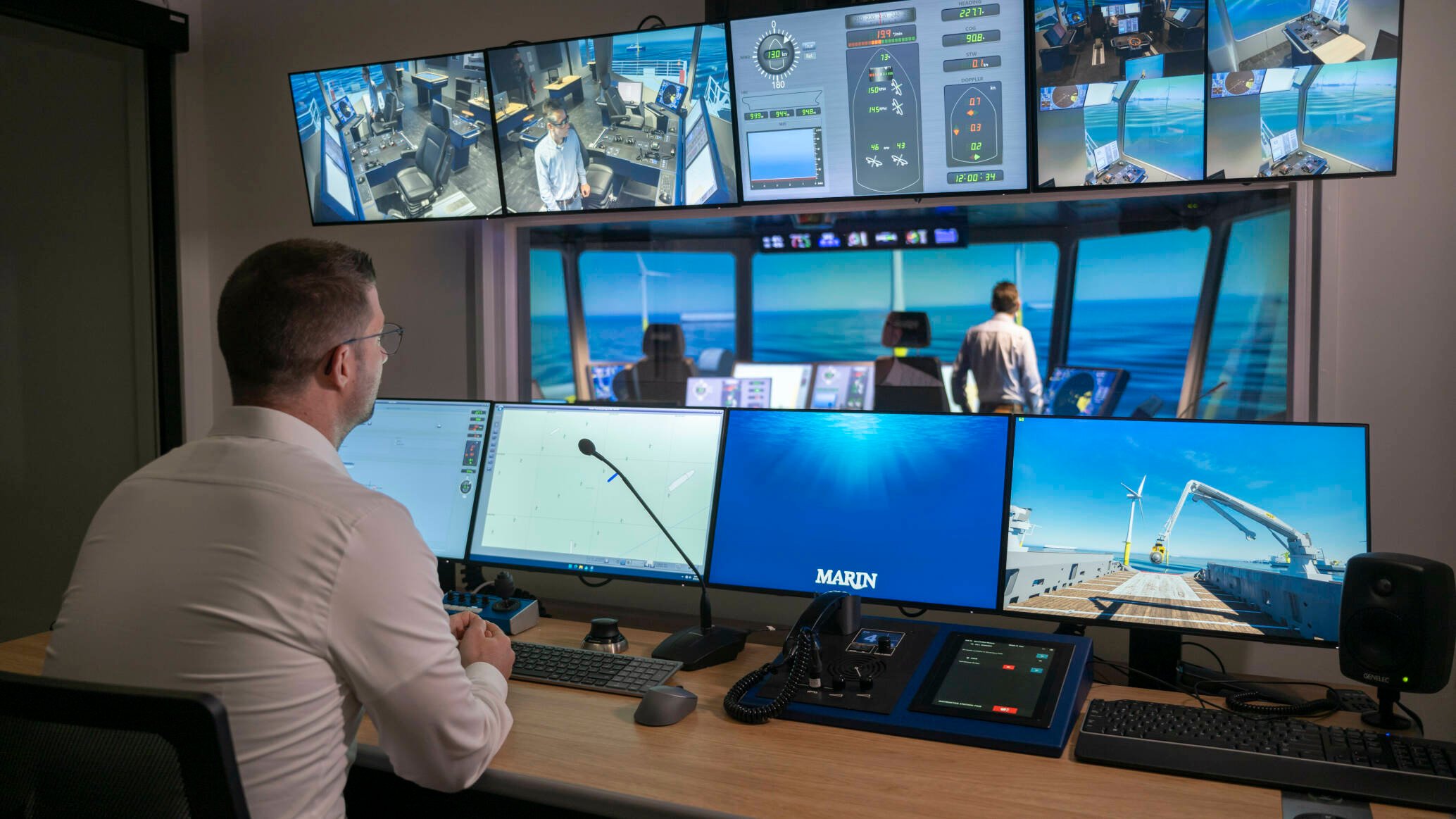June 2024, no. 140
www.marin.nl/zel

www.marin.nl/sosc

More info









Create a MARIN account to stay updated





Report
Exploring further - a look into future applications for the SOSc
Of course, the development of the Seven Oceans Simulator centre continues apace. Firstly, we will focus on getting all the SOSc facilities up to their full potential. But there is more. We will forge ahead in exploring new possibilities to make ships and operations safer, cleaner and more efficient by offering the most realistic immersive simulations of interactions between people, ships-installations-infrastructure and the environment.
Here we highlight a few nice examples. Human Centred Design can only be implemented fully if we can involve crews more during the design process through experimentation. At the moment, we are just scratching the surface of the possibilities that Extended Reality technologies such as virtual reality, augmented reality and for instance, haptics can offer. Examples are certainly not limited to simulations of deck handling operations and augmented visual support for captains and mates on the bridge. Even the optimal ship bridge of the future can be developed in an immersive virtual environment together with the ship’s future operators.

Interested? Contact us to discuss your options

Human physiological measurements to visualise and analyse the complex interactions between human operator and operational environment.
Within this simulation, the MARIN mAUV (Modular Autonomous Underwater Vehicle) is being retrieved after inspecting windpark monopiles. On the aft deck, the operators carry out a hoisting operation. The mAUV is guided into its carriage for transportation and storage.
Connecting worldwide
In the current setup, SOSc simulators are fully integrated to make multi-ship interactions possible. In the future we envisage that we are also able to hook-up with other (ship) simulators, both in the Netherlands and abroad. In doing so, we are able to simulate more complex scenarios, while also allowing customers to participate in the simulations without the need to travel to our Wageningen HQ or Houston.
Additionally, we aim to be able to couple with simulators which operate with other “modalities”, for instance a flight simulator. Then we will be able to interact realistically in a multimodal way with helicopters/drones operating from a ship (i.e. landing and taking off from a ship’s deck).
Underwater vehicles
The underwater realm is currently hardly covered in realistic simulations. At the SOSc, we envisage that we are able to realistically simulate not only the hydrodynamic behaviour of underwater vehicles, but also that we will be able to offer a realistic visual presentation of the vessel and its environment in order to allow a (future) operator to test, evaluate and train using Remotely Operated Vehicles.
Sea the Future.
Alternative “fuels” for propelling ships will be more commonly used in the future. Each fuel and corresponding propulsion system, however, has its specific behaviour. We need to explore the technical opportunities and challenges this brings, but also, we need to “educate” the captains and mates about how to operate these ships in a safe and efficient way. In order to do so we aim to “connect” MARIN’s engine room of the future (Zero Emissions Lab) to the SOSc simulators. In this way, we will be able to offer the captains and mates the most realistic simulation of their future ship.
Adding motions & vibrations
The possibilities (and limitations) of “adding” motions and motion cueing to simulations also have to be explored further. An area which has only lightly been touched upon by research is extreme motions such as slamming, (near) capsizing, extreme waves and parametric roll. When we are able to simulate these conditions, does this lead to improvement in the design of ships and operations, or does it lead to the idea that “it’s just a game”? Simulating these conditions is not only challenging from a programmer’s point of view, but serious research questions on the validity of measured (behavioural) results need to be answered by our researchers and human factor specialists as well. The same applies for sailing through ice, for example, when adding vibrations and impulse motions (jerks/jolts).
Lastly, as stated, we aim to make ships and operations safer, cleaner and more efficient by offering the most realistic simulations. Ultimately, people are the most important factor and we need to assist them through better understanding.



www.marin.nl/zel

www.marin.nl/sosc

More info
Sea the Future.
Interested? Contact us to discuss your options
Alternative “fuels” for propelling ships will be more commonly used in the future. Each fuel and corresponding propulsion system, however, has its specific behaviour. We need to explore the technical opportunities and challenges this brings, but also, we need to “educate” the captains and mates about how to operate these ships in a safe and efficient way. In order to do so we aim to “connect” MARIN’s engine room of the future (Zero Emissions Lab) to the SOSc simulators. In this way, we will be able to offer the captains and mates the most realistic simulation of their future ship.
Adding motions & vibrations
The possibilities (and limitations) of “adding” motions and motion cueing to simulations also have to be explored further. An area which has only lightly been touched upon by research is extreme motions such as slamming, (near) capsizing, extreme waves and parametric roll. When we are able to simulate these conditions, does this lead to improvement in the design of ships and operations, or does it lead to the idea that “it’s just a game”? Simulating these conditions is not only challenging from a programmer’s point of view, but serious research questions on the validity of measured (behavioural) results need to be answered by our researchers and human factor specialists as well. The same applies for sailing through ice, for example, when adding vibrations and impulse motions (jerks/jolts).
Lastly, as stated, we aim to make ships and operations safer, cleaner and more efficient by offering the most realistic simulations. Ultimately, people are the most important factor and we need to assist them through better understanding.

Human physiological measurements to visualise and analyse the complex interactions between human operator and operational environment.
Within this simulation, the MARIN mAUV (Modular Autonomous Underwater Vehicle) is being retrieved after inspecting windpark monopiles. On the aft deck, the operators carry out a hoisting operation. The mAUV is guided into its carriage for transportation and storage.
Connecting worldwide
In the current setup, SOSc simulators are fully integrated to make multi-ship interactions possible. In the future we envisage that we are also able to hook-up with other (ship) simulators, both in the Netherlands and abroad. In doing so, we are able to simulate more complex scenarios, while also allowing customers to participate in the simulations without the need to travel to our Wageningen HQ or Houston.
Additionally, we aim to be able to couple with simulators which operate with other “modalities”, for instance a flight simulator. Then we will be able to interact realistically in a multimodal way with helicopters/drones operating from a ship (i.e. landing and taking off from a ship’s deck).
Underwater vehicles
The underwater realm is currently hardly covered in realistic simulations. At the SOSc, we envisage that we are able to realistically simulate not only the hydrodynamic behaviour of underwater vehicles, but also that we will be able to offer a realistic visual presentation of the vessel and its environment in order to allow a (future) operator to test, evaluate and train using Remotely Operated Vehicles.
June 2024, no. 140
Of course, the development of the Seven Oceans Simulator centre continues apace. Firstly, we will focus on getting all the SOSc facilities up to their full potential. But there is more. We will forge ahead in exploring new possibilities to make ships and operations safer, cleaner and more efficient by offering the most realistic immersive simulations of interactions between people, ships-installations-infrastructure and the environment.
Here we highlight a few nice examples. Human Centred Design can only be implemented fully if we can involve crews more during the design process through experimentation. At the moment, we are just scratching the surface of the possibilities that Extended Reality technologies such as virtual reality, augmented reality and for instance, haptics can offer. Examples are certainly not limited to simulations of deck handling operations and augmented visual support for captains and mates on the bridge. Even the optimal ship bridge of the future can be developed in an immersive virtual environment together with the ship’s future operators.
Exploring further - a look into future applications for the SOSc
Create a MARIN account to stay updated





Report









